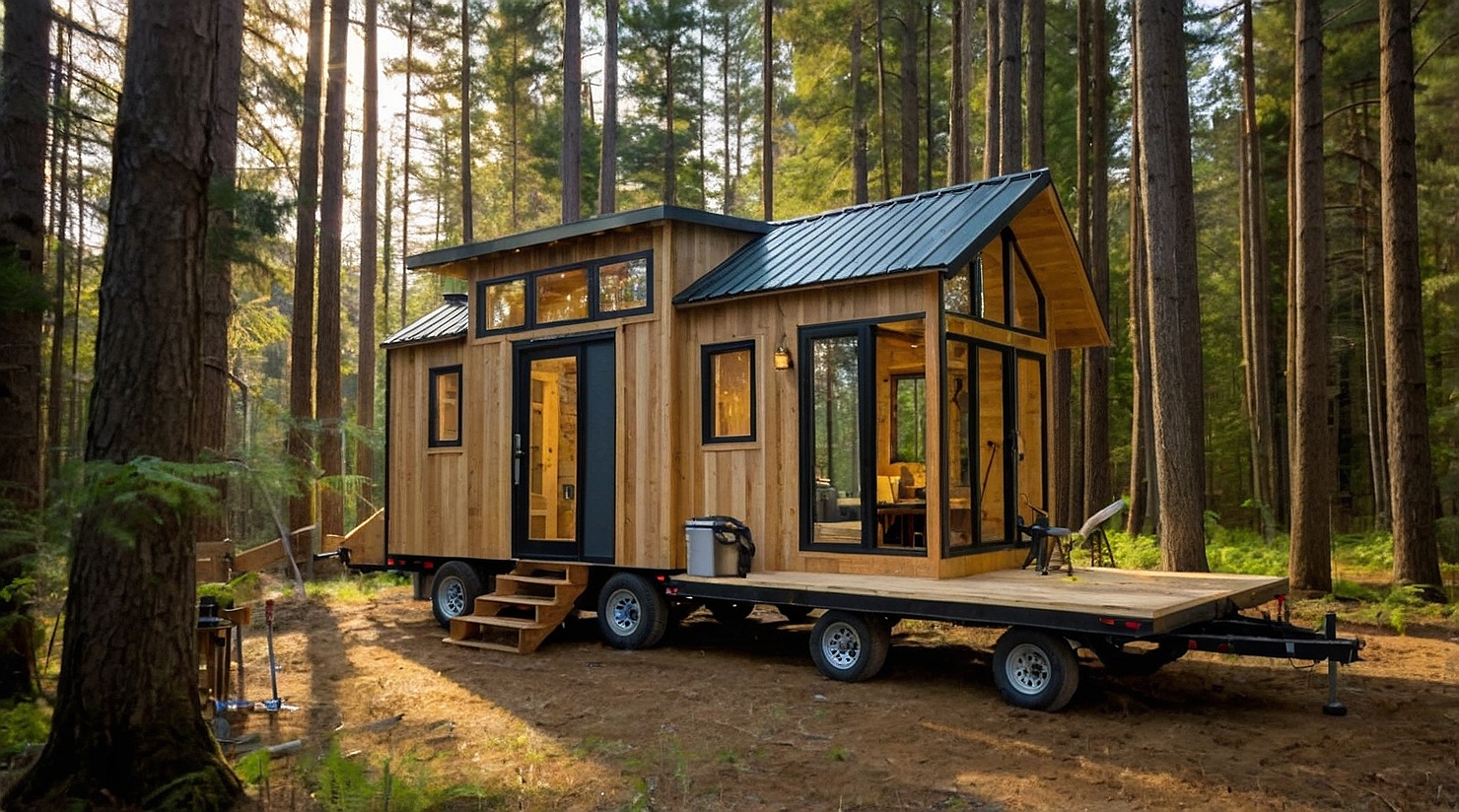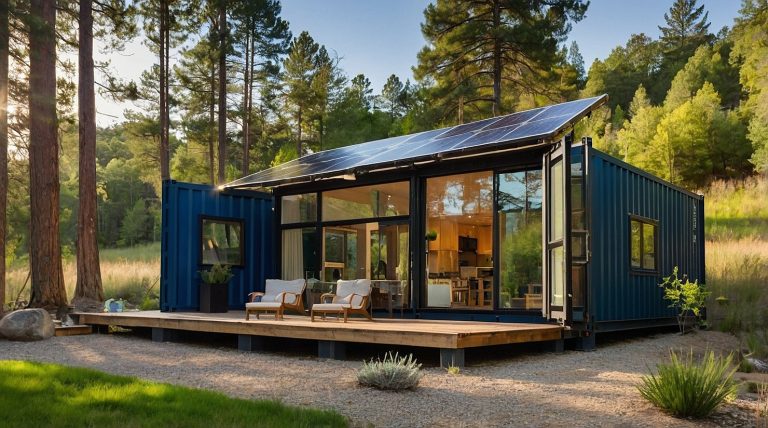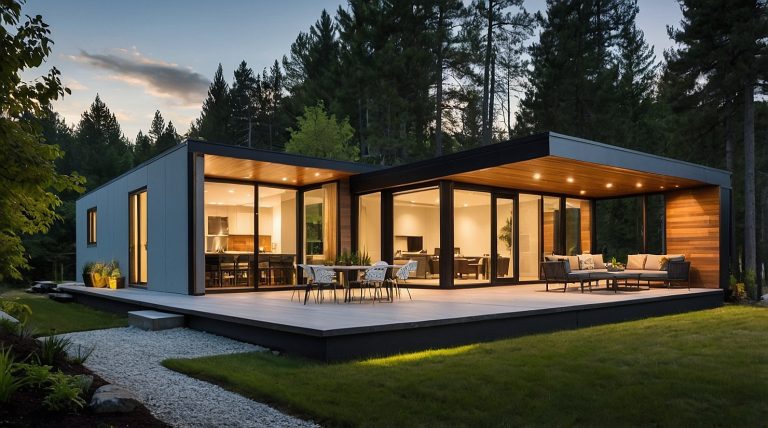Essential Off Grid Tiny House Tips for Your Ultimate Freedom

Dreaming of a simpler, more sustainable life that’s free from public utilities and brings you closer to nature? An off grid tiny house could be the perfect solution. Combining minimalism with off-grid living, these homes offer a unique way to embrace energy efficiency, reduce your carbon footprint, and create a lifestyle that aligns with renewable energy principles.
Off grid tiny house living isn’t just about downsizing—it’s about making intentional choices. From solar panels and rainwater collection systems to composting toilets and alternative energy sources, every detail requires thoughtful planning. This guide explores the core aspects of achieving your off-grid tiny house dream, empowering you with actionable steps and real-world insights. We’ll cover generating power, sourcing water, heating efficiently, and handling waste responsibly.
Understanding the Allure of Off Grid Tiny House Living
An off grid tiny house embodies freedom, sustainability, and a return to simpler roots. Many people today are inspired by a growing movement to embrace self-sufficiency and reduce their reliance on public utilities.
This trend echoes our pioneer and ancestral roots, with modern technology making it easier than ever to live independently. Imagine waking up to breathtaking mountain vistas or the serene stillness of a forest—your off grid tiny house can be located wherever your heart desires.
Benefits of Off-Grid Living
Off-grid living offers substantial financial and environmental benefits. While the initial investment in solar panels, rainwater collection systems, and wells, can be significant, the long-term savings on utilities often outweigh these costs. A well-designed off grid tiny house can drastically reduce your monthly expenses, allowing you to allocate resources toward other priorities.
This lifestyle also fosters energy efficiency and a minimal environmental footprint. Harnessing alternative energy sources like solar power and managing resources such as grey water and waste aligns with sustainable living principles. By reducing reliance on fossil fuels and traditional utilities, off-grid living empowers you to tread lightly on the planet while enjoying the rewards of independence.
As the movement toward sustainable and self-sufficient living grows, the allure of off grid tiny house living continues to capture the imagination of individuals seeking a deeper connection with nature and a simpler way of life. The first thing you get to decide is whether you will design and build your own tiny home, or research and choose a tiny home that has been or will be built and have it delivered.
But for the time being, we will go ahead and talk about the DIY way, and help you figure out how to design and build your own tiny home. Because in the end, living off the grid is more about becoming self sufficient and relying upon your self and what better way to do that than to build your own house.
Designing and Building Your Tiny Home
Building an off grid tiny house is more than just constructing a shelter; it’s about creating a way of life that combines sustainability, independence, and functionality.
Thoughtful design and practical features are critical, especially when incorporating off-grid living elements like solar power and rainwater collection. By planning carefully, you can transform your tiny house into a cozy, sustainable sanctuary tailored to your needs.
Visualizing Your Off-Grid Oasis
Before picking up a hammer, take time to envision your ideal off grid tiny house. Ask yourself what self-sufficiency means to you: Is it complete independence from grid power or a hybrid system that uses renewable energy alongside traditional utilities? Your vision will guide every aspect of your design, from materials to layout.
Explore off grid tiny house designs online or within tiny house communities for inspiration. Look for ideas that align with your goals, such as maximizing energy efficiency or incorporating innovative features like composting toilets and greywater systems.
Space Optimization and Layout
In an off grid tiny house, every square inch counts, and clever design solutions, like vertical storage, fold-down tables, and loft spaces, can make your small space feel surprisingly roomy. Prioritize areas that matter most to you. Need a home office or larger cooking space? Then design your tiny home with these essentials in mind.
Incorporating passive solar design into your layout not only enhances natural light and warmth but also supports energy-efficient living. A well-planned layout allows your off grid tiny house to balance comfort and practicality seamlessly.
Sustainable Material Selection
Sustainability is key when building an off-grid tiny home. Choose materials like reclaimed wood, recycled metal, insulated concrete forms (ICFs), or structural insulated panels (SIPs) to boost energy efficiency, cutting heating and cooling needs. These eco-friendly options are perfect for maintaining a comfortable indoor environment, even during winter months or on cloudy days. Researching green building practices and sourcing materials locally can further reduce your carbon footprint.
Navigating Regulations and Permits
The backbone of any off-grid tiny house is its infrastructure. Solar panels should be incorporated to generate electricity, and rainwater harvesting systems should be considered for a sustainable water supply. Composting toilets and septic systems are popular solutions for waste management. Each system must be carefully sized and installed to ensure efficiency and long-term functionality. Thoughtful planning in these areas is essential for creating a truly self-sufficient and comfortable off-grid lifestyle.
Powering Your Off-Grid Tiny House
Living in an off grid tiny house means creating a reliable and sustainable power system tailored to your location and energy needs. From solar panels to micro-hydro systems, there are various options for generating electricity. Choosing the right power sources is critical for maintaining comfort and efficiency while living off-grid.
Solar Power: The Cornerstone of Off-Grid Living
Solar power is the most popular choice for any off grid tiny house due to its accessibility and low maintenance. Installing solar panels on a north-facing roof with minimal shade ensures maximum energy generation. For tips on sizing and installation, check out our guide to solar panels for detailed insights. External resources like EnergySage also provide valuable information on solar system costs and configurations.
During cloudy days or winter months, energy production may decrease, so it’s important to size your solar system to meet your power demands even under less-than-ideal conditions. Including solar generators as a backup can bridge gaps during periods of low sunlight, ensuring your tiny house remains powered.
Generators: A Backup Power Source
Portable generators, especially solar-powered generators, are a valuable addition to any off-grid power system. They provide a reliable backup source during overcast weather or when energy usage surpasses what your primary system can produce. For more on their use and efficiency, visit The Tiny Life’s articles on power solutions.
Wind and Micro-Hydro Power: Alternative Options
In areas with consistent wind, installing a wind turbine can supplement or even replace solar power. Wind turbines are most effective in open spaces where strong, steady winds are common. However, the initial setup cost can be significant, and their efficiency depends heavily on location.
For properties with a water source, micro-hydro systems offer an excellent alternative. These systems generate electricity by harnessing the power of flowing water through micro-turbines. Consistent water flow and proper system sizing are crucial for optimal performance.
Combining Power Sources for Efficiency
Many off-grid tiny house owners combine multiple power sources to ensure energy independence. For example, solar panels can be the primary energy generator, with wind turbines or micro-hydro systems as supplemental sources. This diversified approach minimizes reliance on any single system and ensures power availability during variable conditions.
Off Grid Tiny House Water and Waste Management
Living in an off grid tiny house requires careful planning for water supply and waste management since public utilities are not an option. Establishing reliable water sources and efficient waste disposal systems is essential for a sustainable and self-sufficient lifestyle. Whether using rainwater collection, well water, or composting toilets, having the right setup ensures a comfortable, eco-friendly home while minimizing your environmental impact.
A well-designed off-grid water and waste system should consider availability, sustainability, and legal requirements. Some areas have strict regulations regarding grey water disposal and septic tanks, making it crucial to research local zoning laws before setting up your systems. By integrating the right solutions, your off-grid tiny house can maintain energy efficiency and independence while conserving natural resources.
Water Sources: Rainwater and Wells
A rainwater collection system is one of the most efficient ways to secure a reliable water supply for an off-grid tiny home. Installing gutters and downspouts that channel rainwater into water tanks or cisterns allows homeowners to store and filter rainwater for everyday use. Many off-grid tiny houses pair rainwater harvesting with filtration systems to ensure safe drinking water.
For those with inconsistent rainfall, well water can be an excellent alternative. Drilling a well provides a continuous water supply, though it requires a water pump to transport water into the home. Many off-grid tiny homeowners implement greywater recycling for irrigation or secondary household use to maximize water efficiency. Understanding your area’s well water regulations and rainwater collection laws is crucial to maintaining a legally compliant off-grid lifestyle.
Waste Solutions: Composting Toilets and Greywater Systems
Managing waste effectively is just as important as securing a water supply in an off grid tiny house. Traditional septic tanks may not always be feasible due to space limitations or environmental concerns, making composting toilets a popular alternative. These toilets break down waste into nutrient-rich compost through aerobic decomposition, reducing water waste and minimizing carbon footprint.
A well-designed grey water system can further enhance waste management in an off-grid tiny home. Grey water, which includes used water from sinks, showers, and washing machines, can be repurposed for irrigation or safely filtered back into the environment. Setting up a filtration system helps reduce contamination and supports sustainable water use. Understanding local grey water regulations ensures compliance with zoning laws, allowing off-grid tiny houses to maintain environmentally responsible waste disposal.
By integrating rainwater collection, well water, composting toilets, and grey water systems, off-grid tiny homes can operate efficiently without reliance on public utilities. Proper waste management and water conservation create a truly self-sufficient and sustainable living experience.
Ready-Made and Custom Tiny Home Options
If building your off grid tiny house from scratch isn’t for you, there are plenty of ready-made or customizable plans available. These designs cater to various lifestyles and preferences, allowing you to embrace off-grid living without the hassle of construction. Below are several popular design options, including barndominiums, yurts, A-frame homes, and others to help you find the perfect tiny home.
Barndominium Floor Plans
A barndominium combines the rustic charm of a barn with the comfort of modern living. These homes, made from converted barns or metal sheds, are affordable, durable, and quick to assemble. They’re perfect for those who want to embrace off-grid living while reducing construction time and costs. Barndominiums can serve as permanent residences or temporary spaces while you build a larger home.
Yurt Design Plans
Yurts are gaining popularity within the tiny house community for their simplicity and affordability. These round, tent-like structures offer a unique blend of modern comfort and off-grid simplicity. Yurts are well-suited for those looking to minimize their environmental impact and live closer to nature. You can also explore Pacific Yurts for customizable yurt options.
A-Frame Design Plans
The A-frame tiny house is known for its striking angular design and versatility. Easy to build and energy-efficient, these homes are ideal for both off-grid living and vacation retreats. With a range of free and paid A-frame plans, you can customize your layout to suit your needs.
Prefabricated Tiny Homes
Prefabricated tiny homes offer a turn-key solution for those looking to bypass construction altogether. Many companies provide customizable options with features like solar panels, composting toilets, and rainwater collection systems pre-installed. These homes are perfect for individuals who want to embrace off grid tiny house living with minimal setup.
Container Homes
Shipping container homes are another popular choice for off grid tiny house living. These homes repurpose used shipping containers into modern, functional living spaces. Container homes are durable, eco-friendly, and can be customized to include features like solar power and energy-efficient appliances.
Dome Homes
Geodesic dome homes are not only visually striking but also highly energy-efficient. Their unique design makes them resistant to extreme weather and ideal for off grid tiny houses. Dome homes can be built with sustainable materials and include features like rainwater collection and renewable energy systems.
Tiny Cabins
Tiny cabins offer timeless charm and functionality for a classic look and are another option for a great off grid tiny house. These structures can be designed to include off-grid systems like solar panels, greywater management, and composting toilets. Whether you’re looking for a vacation retreat or a permanent residence, tiny cabins provide an excellent off-grid solution.
Transforming a Shed into a Tiny Home
Converting a shed into a tiny home is an innovative and cost-effective way to embrace off grid tiny house living. Prefabricated sheds, often available at retailers like Amazon or Home Depot, provide a solid foundation that can be transformed into a fully functional, off-grid space. With proper planning and resources, a shed can become a cozy, sustainable haven tailored to your needs.
FAQs About Off Grid Tiny Houses
Final Thoughts
Off grid tiny house living offers a less expensive and environmentally conscious lifestyle. By following this guide and local regulations, you can create your dream home while minimizing your carbon footprint.
Living off-grid allows you to connect with nature while maintaining a comfortable home. Whether you’re seeking adventure or a more sustainable existence, a tiny house off the grid may be the perfect solution.



